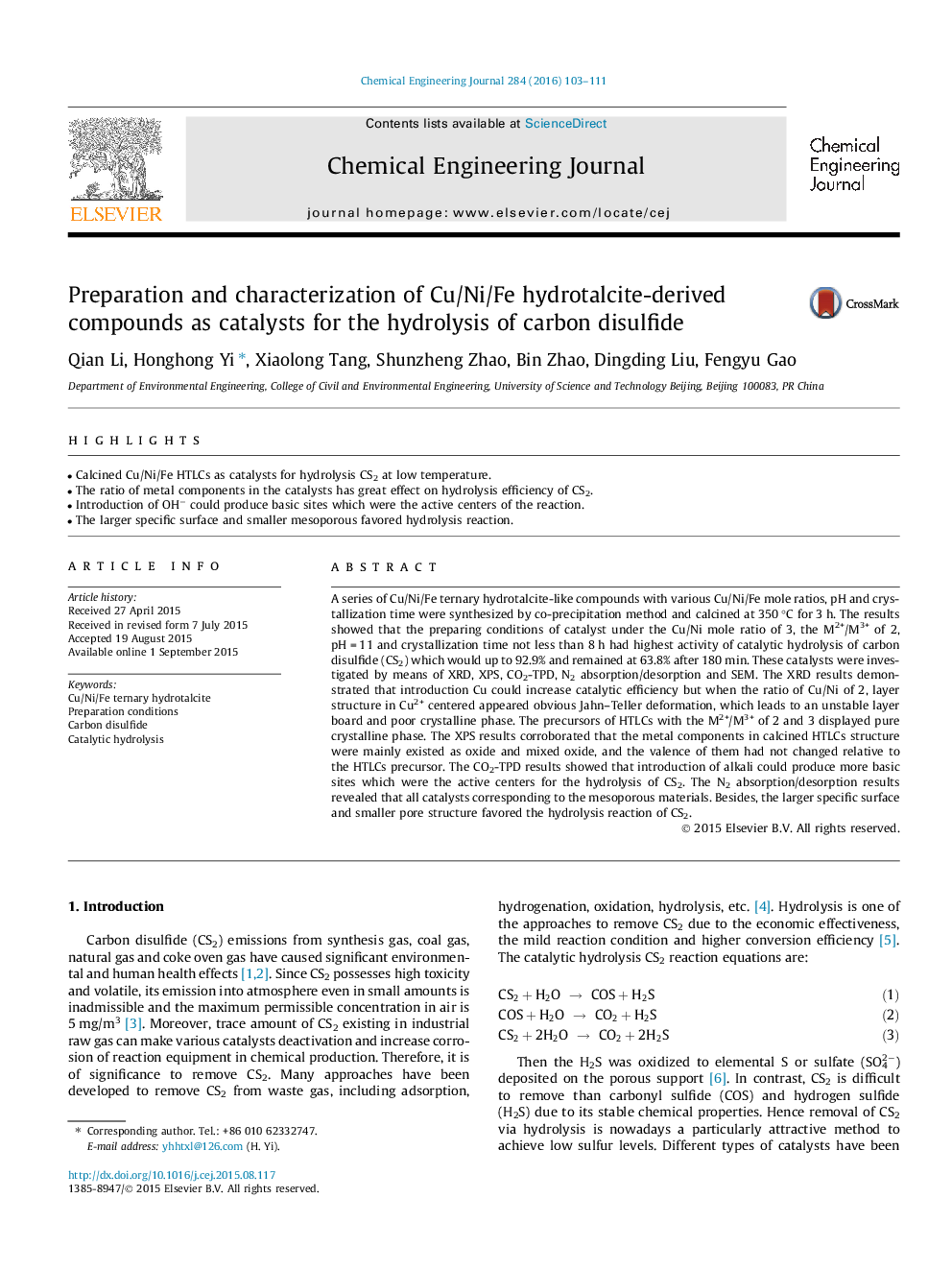| کد مقاله | کد نشریه | سال انتشار | مقاله انگلیسی | نسخه تمام متن |
|---|---|---|---|---|
| 145956 | 456356 | 2016 | 9 صفحه PDF | دانلود رایگان |

• Calcined Cu/Ni/Fe HTLCs as catalysts for hydrolysis CS2 at low temperature.
• The ratio of metal components in the catalysts has great effect on hydrolysis efficiency of CS2.
• Introduction of OH− could produce basic sites which were the active centers of the reaction.
• The larger specific surface and smaller mesoporous favored hydrolysis reaction.
A series of Cu/Ni/Fe ternary hydrotalcite-like compounds with various Cu/Ni/Fe mole ratios, pH and crystallization time were synthesized by co-precipitation method and calcined at 350 °C for 3 h. The results showed that the preparing conditions of catalyst under the Cu/Ni mole ratio of 3, the M2+/M3+ of 2, pH = 11 and crystallization time not less than 8 h had highest activity of catalytic hydrolysis of carbon disulfide (CS2) which would up to 92.9% and remained at 63.8% after 180 min. These catalysts were investigated by means of XRD, XPS, CO2-TPD, N2 absorption/desorption and SEM. The XRD results demonstrated that introduction Cu could increase catalytic efficiency but when the ratio of Cu/Ni of 2, layer structure in Cu2+ centered appeared obvious Jahn–Teller deformation, which leads to an unstable layer board and poor crystalline phase. The precursors of HTLCs with the M2+/M3+ of 2 and 3 displayed pure crystalline phase. The XPS results corroborated that the metal components in calcined HTLCs structure were mainly existed as oxide and mixed oxide, and the valence of them had not changed relative to the HTLCs precursor. The CO2-TPD results showed that introduction of alkali could produce more basic sites which were the active centers for the hydrolysis of CS2. The N2 absorption/desorption results revealed that all catalysts corresponding to the mesoporous materials. Besides, the larger specific surface and smaller pore structure favored the hydrolysis reaction of CS2.
Journal: Chemical Engineering Journal - Volume 284, 15 January 2016, Pages 103–111